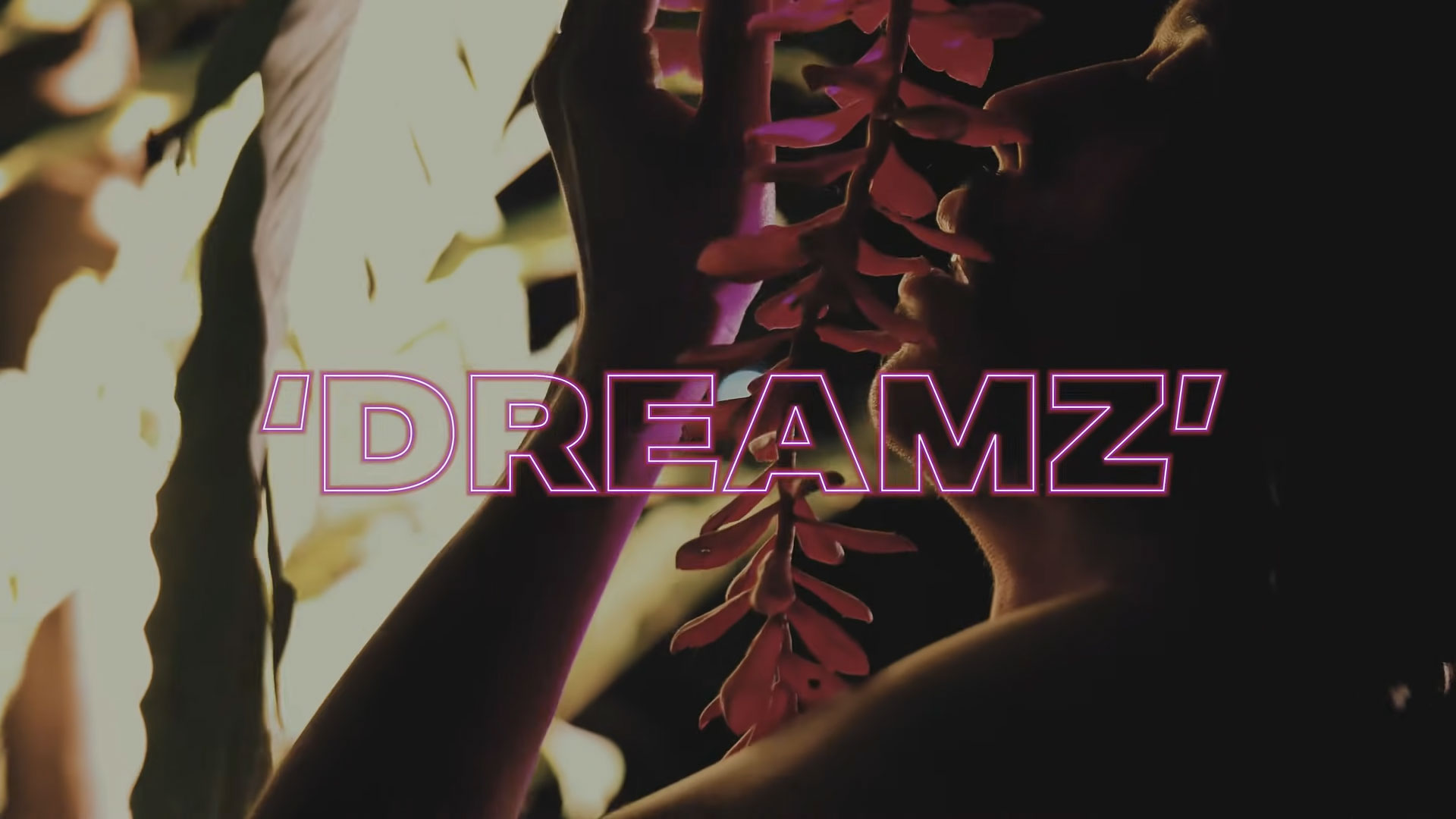
Night Heron – “Dreamz” Music Video
First off, you all met on a concert tour and were working across country lines! Can you speak a bit about your collaborative process for this particular project?
Anton came to me with this concept of melding the human and plant worlds and creating this surreal place where the characters were both and neither simultaneously, and I think this came from brainstorming with Hanna-Katarina who might have been the well-spring of that idea. I cant remember the exact timeline but I do remember being dumb-struck by hearing it, because an almost identical concept had been floating around in my mind for a few years, but I hadn’t had the resources or a very detailed plan of how to execute the vision. Anton and I had met a few years ago while he was on tour in Portland, and we became fast friends. He played bass in Night Heron on a west coast tour and I played bass in his band Lemat in 2018, and once our record was done I sent it to him. He had been working with Rodrigo and Hanna-Katarina on some video projects and we decided to have them run with their vision of how this plant-humanoid world could be realized. It is difficult for me to let go of creative control of anything relating to this band, but im so glad I did. It turned out more beautifully than I ever could have imagined.
I met Cameron in Portland in 2017, during one of my trips through the west coast. I recognized him because I had been a fan of his former band Radiation City for some years and we had friends in common. He was working on Night Heron at an early stage then, but many of my friends (some in it) were talking about this exciting new “super-band” that was coming up. We slowly became friends online kinda — and in 2018, we worked very hard to produce a tour for my band LEMAT, with Night Heron making benefit shows that ended up being small community festivals featuring bands from both countries. This is how we created Mexicadelia/PDX with the help of many friends and volunteers; an extension of our local psych-fest Mexicadelia in Guadalajara. In this tour we shared musicians, having Cameron on bass and Tyler (dear member of both bands) on drums to play in LEMAT, then myself playing bass for Night Heron. We did the whole tour like that and this is how I became part of the band’s journey.
After that, we took a break to rest and plan a tour with our bands in Mexico for 2020. Everything was nicely aligned before we knew a pandemic would hit. Needless to say, we put those projects on hold.
During my quarantine days in Mexico (living with Hannah and Rodrigo), we started to make little films together. It was just for fun, but it all led to making our first formal music video collaboration together — “Glow” / #lematglow — fully produced while in lockdown. This was the first effort to make something in detail. The turnout was a beautiful art piece shared organically and Cameron Spies asking us to make a video for his band’s new album.
Because we are buddies, pals and collaborators at this point, Cameron and I went closely through the ideas and concepts I was giving for this video. This is, in some way, my hand at trying to blend the general aesthetic I learned from being in Night Heron with the worlds I create with Hannah and Rodrigo in Mexico. The project unfolded in a double-video plan with a very tight budget, inspired and encouraged by the quality of the band’s release and the faith we have in each other’s work. Though we can’t always make videos like this with short means, we took a chance to create this together with what we had, knowing that everything beautiful flourishes within the lines of connection and community. We truly want this piece to be seen and the band to be heard. I think this was influential in our process. Some people helped us make it just to be part of it. The combination of our talents (Hannah, Rodrigo and I) and Night Heron’s music is the core of what happened, but we are very lucky to know enough brilliant artists to work with at this point, that a gathering of freaks can turn into a proper fantasy piece.
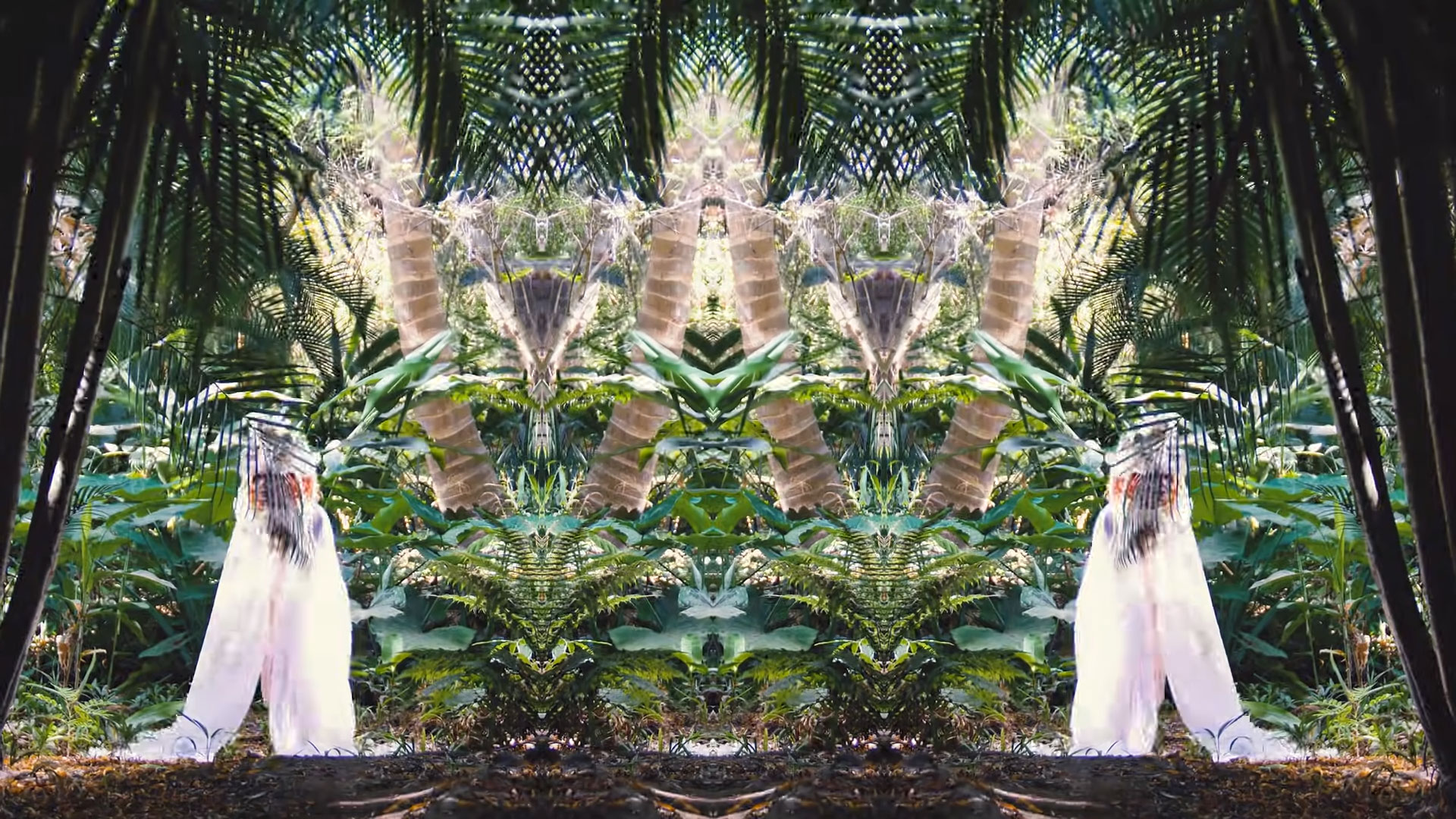
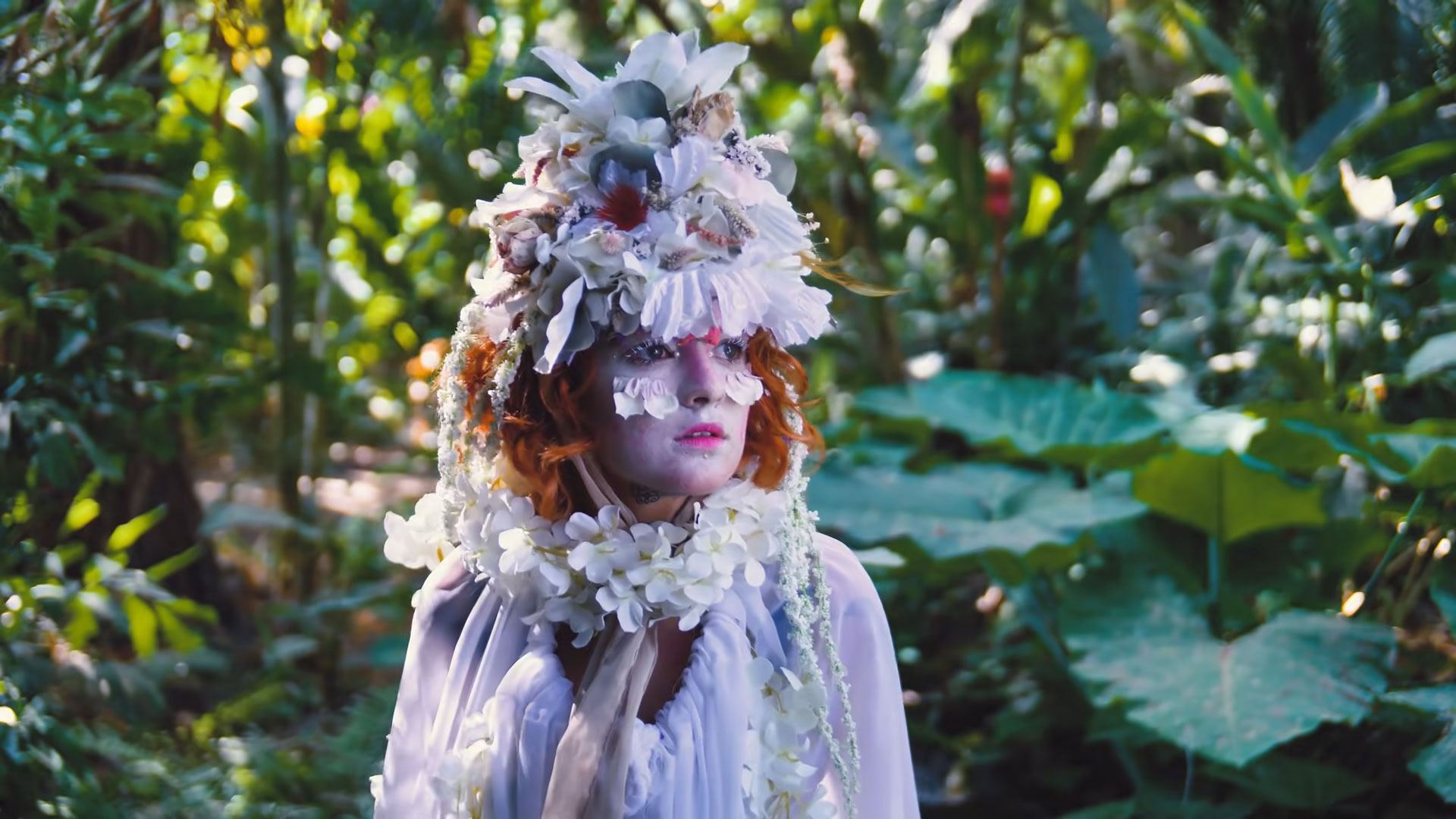
Human beings blend in and out of natural space in the music video, and visual effects are employed to convey a subtle effect that seems to pair nicely with the opening Joseph Campbell quote, which says, “For the dream and the dreamer are ultimately one.” Can you elaborate more on that concept and how it was used to shape the visual language?
Even though the quote came after we finished the video (it happens to be one of Hanna’s favourite quotes from Joseph Campbell), I think the dream world and the subconscious mind must be explored time and again. The quote also reminded me Calderón de la Barca’s poem “Life is Dream,” that finishes with “…porque la vida es sueño y los sueños, sueños son. (…because life is dream, and the dreams are dreams themselves.)” There are archetypes and patterns in dreams; there is a collective consciousness and there must be a collective dream that is neverending and exists simultaneously just like the universal consciousness. We have the opportunity to access to it every night; I really like to think that. My dreams are ultimately my own experience and I can explore them, map them, keep a diary of them, and learn from them. When I work with visual language, whether is behind the camera, conceptualizing, or editing, I work with my ability to accomplish, depict, follow. or materialize my dreams. “For the dream and the dreamer are ultimately one.”
The key to dream-like feeling is mystery. We leave room for doubt; loose ends in explaining what exactly our character is experiencing. Part of it comes from Rodrigo’s editing style, where sequences are not explicitly explained. The reasoning in the visual effects should make more sense when the prequel of the video is released. Of course, Hanna’s creation of surreal creatures was effective to alter a natural environment, at least to human perception. Magic is very natural, you see?
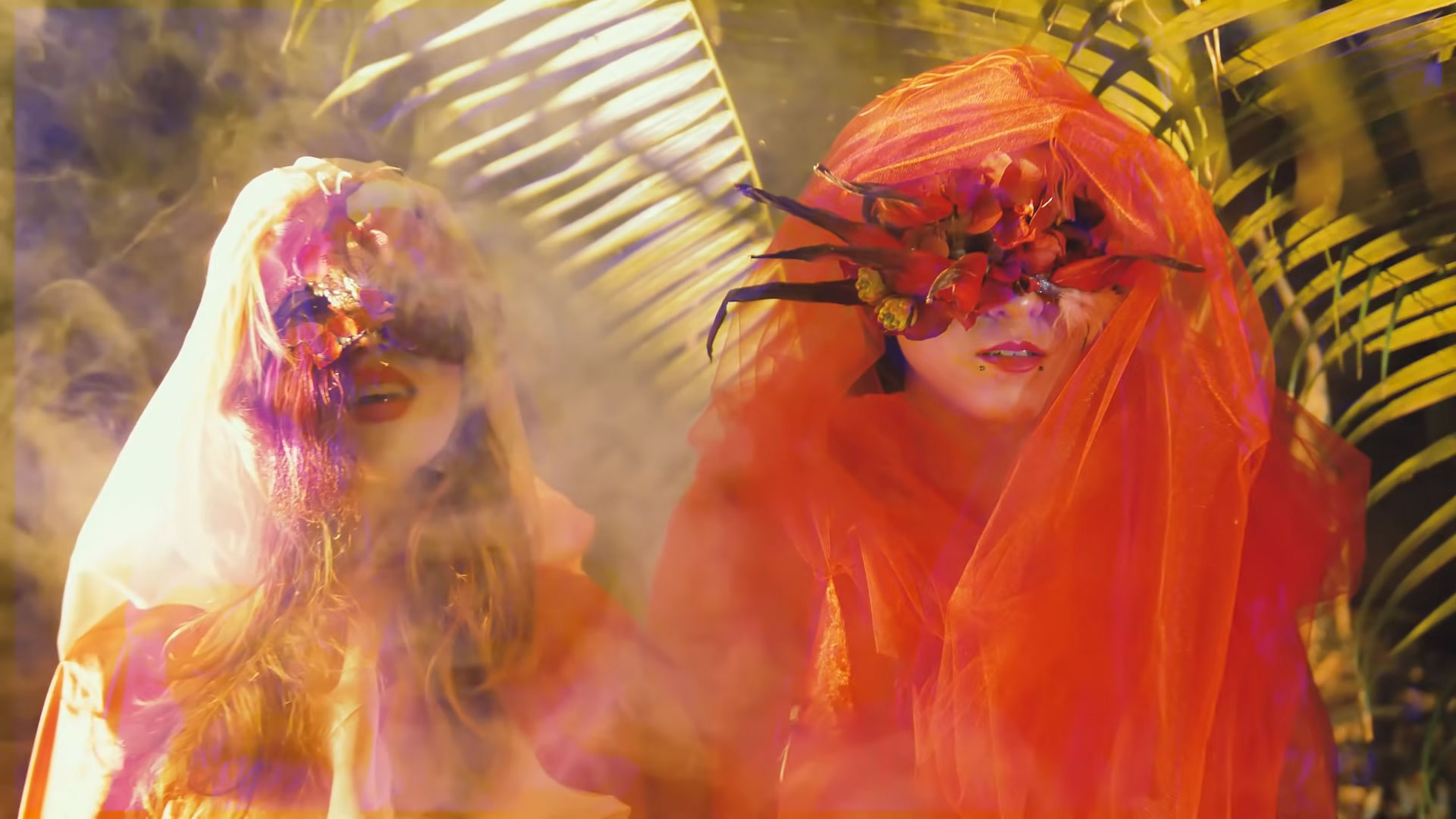
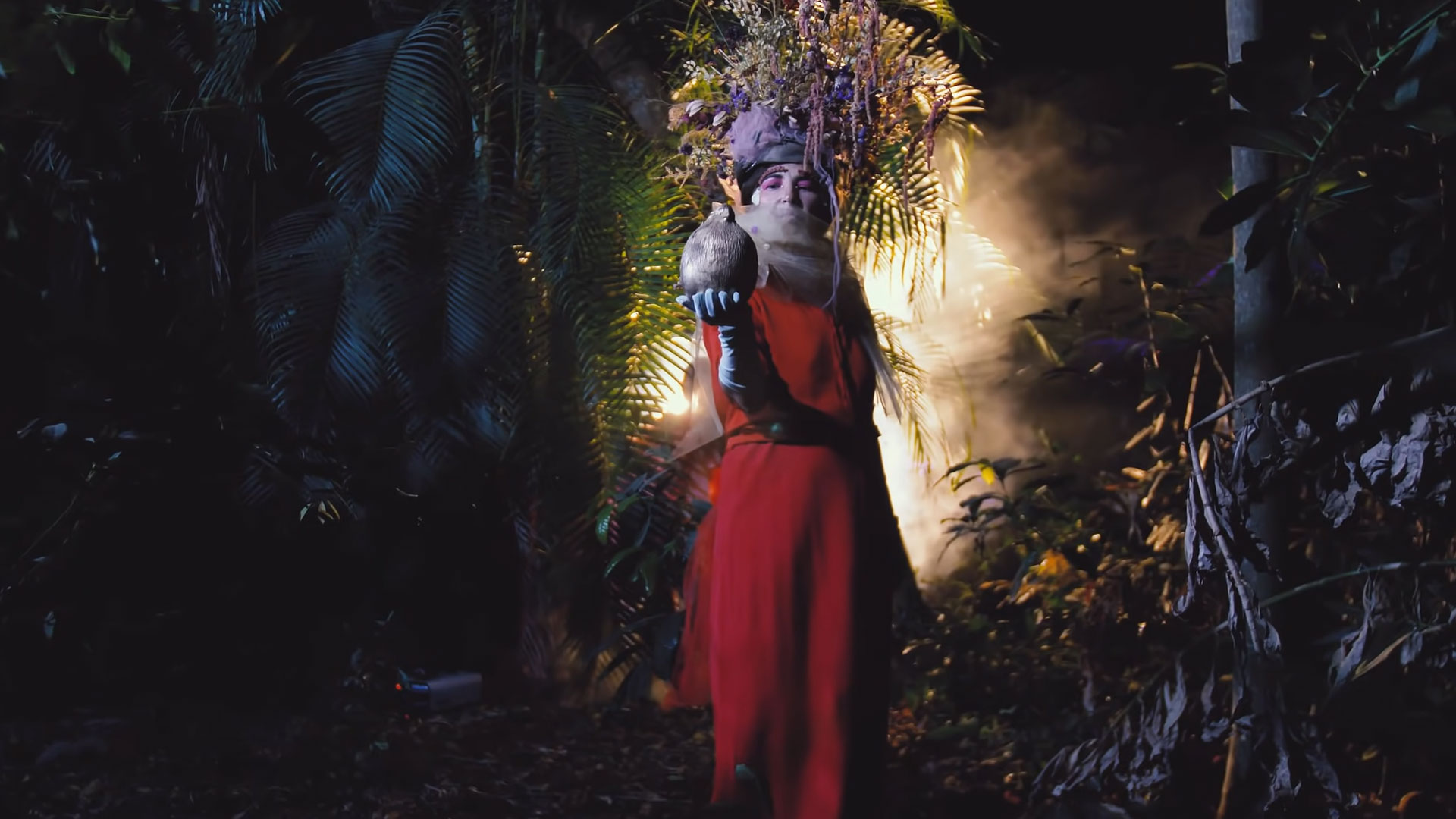
Instructions for the Night is the name of the album; this track is called “Dreamz.” Some of you also speak openly of psychedelics. Whether in the process of making the record or the music video, do you have any processes or rituals to help you tap into liminal states as a generative space?
I’ve been using sacred plants for more than 10 years now. I consider myself a psychonaut. This year I’ve been using mostly Psylocibe Cubensis B+. We live near Cofradía de Suchitlán and a lot of golden teachers grow there. For me, the psychedelic experience goes hand-in-hand with my personal growth, and my personal life goes hand-in-hand with my art.
I personally didn’t draw visions from anything other than the music and theme of the song. Having said this, my connection to the psychedelic world is inherent in everything I make.
But this is a visionary story from the perspective of our main character. The band was happy to push this psychedelic narrative, so we as producers were free to experiment with that aesthetic.
Sometimes when I go to other countries — including Latin American ones — I think about how the relationship to the spiritual plane feels closer and more in the general consciousness than in the United States. Do you feel there is anything particular about Mexican culture and the landscape in Mexico which helps heighten the concepts of this track, in particular?
I think there are potent geographical gridlines and sacred places all over the world but definitely Comala, Colima, México has certain special energy because of its volcano (Volcan de Fuego). I also think every culture and “pueblos originarios” (Indigenous communities) of the world share pretty similar cosmovisions and mythologies but in Mexico, it is more palpable.
I couldn’t tell. We just make things in our own environment and people from other places find it different. I see a lot of magic in the United States, too, depending on the place. Each person may or may not have a sensitivity to it. I don’t think we were trying to make a spiritual piece, as much as a dream world. However, it might come out like that because of the not-directed expression of our cast.
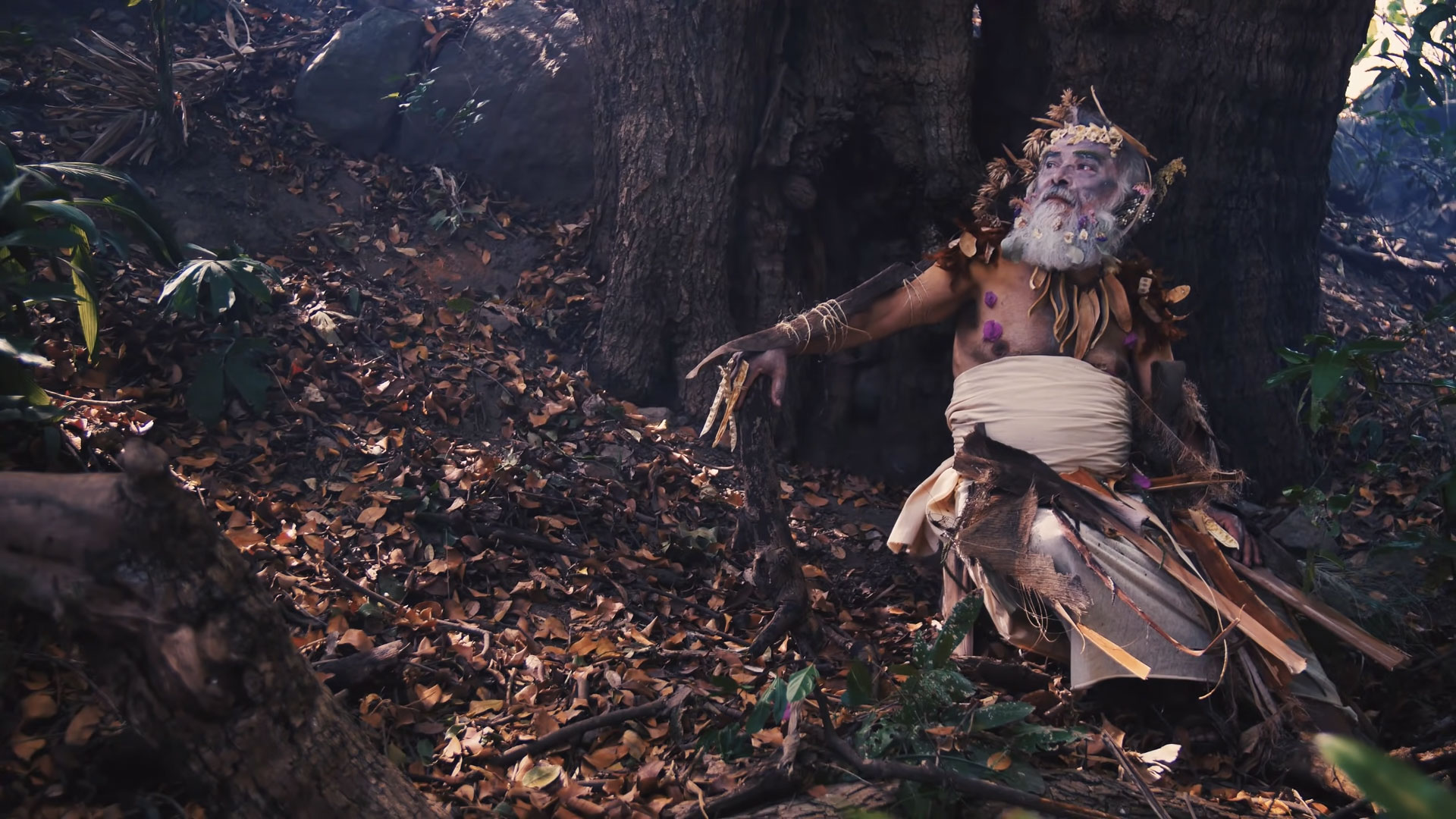
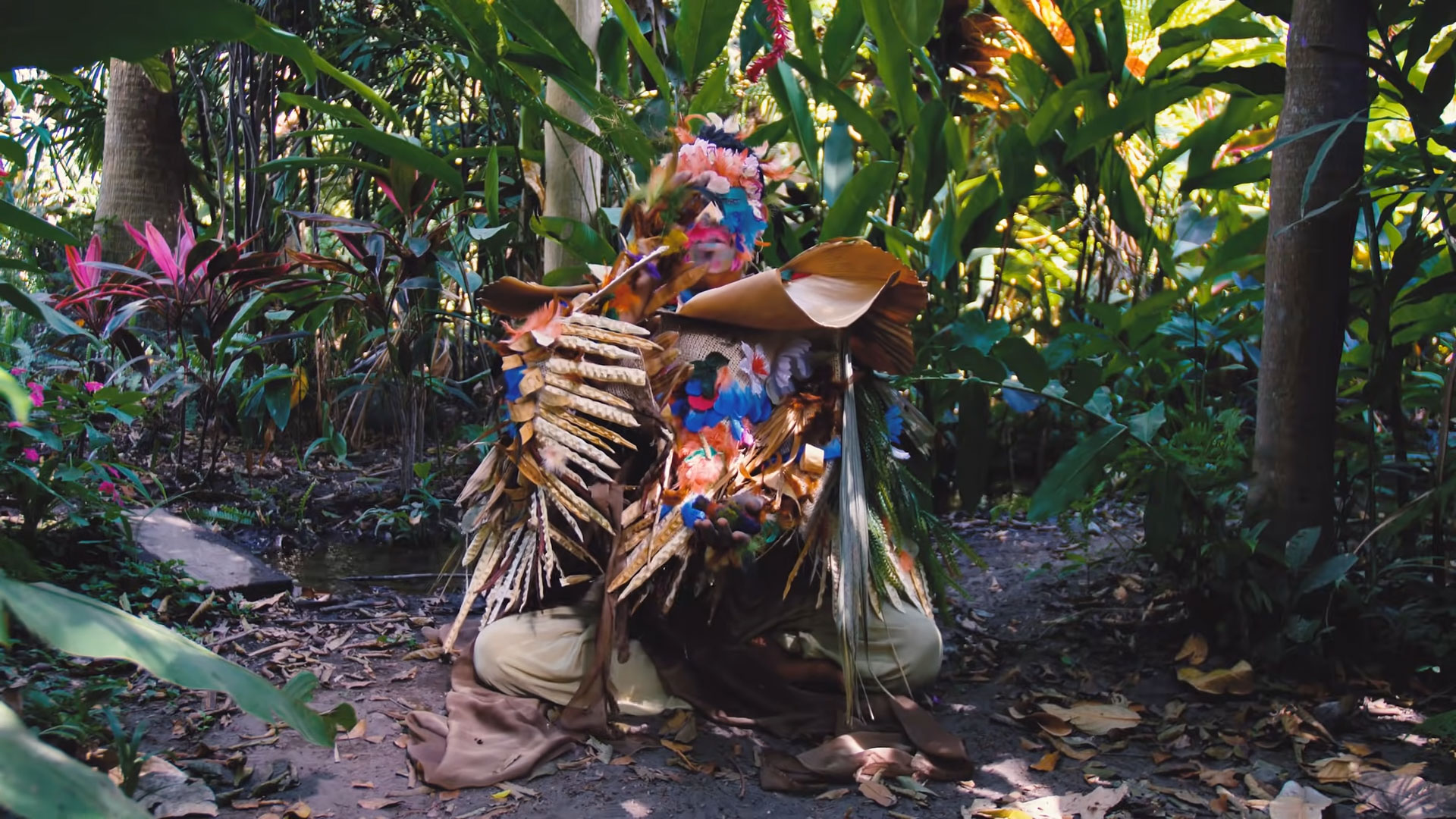

Wardrobe and style obviously played a huge role in this piece, but interacts deeply with the landscape. How did you arrive at the aesthetic that you did, and why did it feel so important to center human beings in nature in such a way?
Hanna-Katarina (Art Director & Wardrobe):
For me, the aesthetic was birthed from this lush landscape and the plants themselves. Truly, first came the song “Dreamz,” [with] its entrancing, colorful and sensual rhythm.
I hear the song and I see certain colors, certain movements.
We talked of the concept of using human characters to depict plants, transforming them into creatures that are neither human, animal, or plant.
For the aesthetic, I was very inspired by many visionary and surreal paintings from all over the world, in which there are human depictions of states of consciousness, dreams and interaction with natural and celestial worlds.
These surreal, majestic realms I deeply longed to see in movement!
I was moved by the storytelling in these paintings I admire, the blurring of lines between humans, animals and nature.
It was this blur I wanted to attempt to achieve.
Mythology and human story telling of time through narrative, craft and costume perpetually plays a big role of inspiration for me.
A lot of the material we used for these costumes was from found materials from nature and Jules’ garden.
With certain ideas and concepts in mind, we used what we found and what was hearty and durable enough to be worn and manipulated.
I knew from the beginning I wanted it to be a very diverse set of characters, like a moving painting of stories and spaces through time,through dreams.
I long to play in a place of interconnectivity, where we humans are open to the consciousness of the plants and animals, that we see no borders between.
I like to think of these characters that way, somewhere suspended between species.
In totality I feel this video piece about losing time, losing reference of what we are; be it a piece of sand, a plant, a human, energy, the dreamer or the dream. Are we the visuals or the sound? In collaboration, the statement is even bolder, because we lose the borders of ownership over a piece and definition of genre. This is really powerful. For me, this is where a piece of art can totally come to life on its own. This [Joseph Campbell] quote, though wildly simple, is utterly profound. We are the dream, baby.
What kind of budget did you work with to pull off such ambitious looks?
The budget was tight, so we worked very hard in creative terms using natural materials for the costumes and non-artificial locations, putting together the gear we had at hand and the help from our friends.
This was a collaboration piece: an effort of our local talents to create an art piece; not the typical case of a production. We want people to see our work and what we are capable of, so we took a chance with Night Heron, because we believe in the band’s work and the quality of their music.
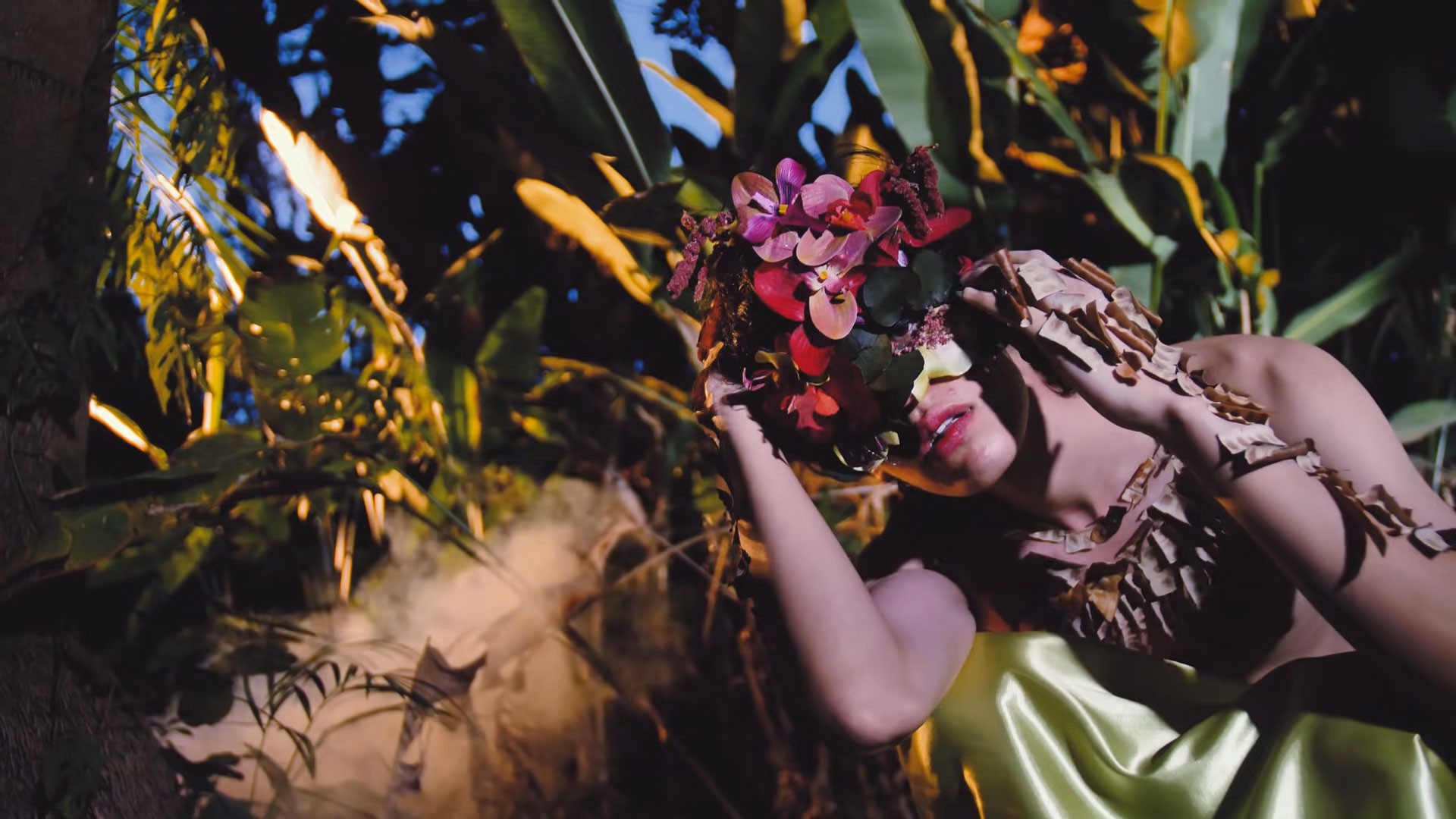
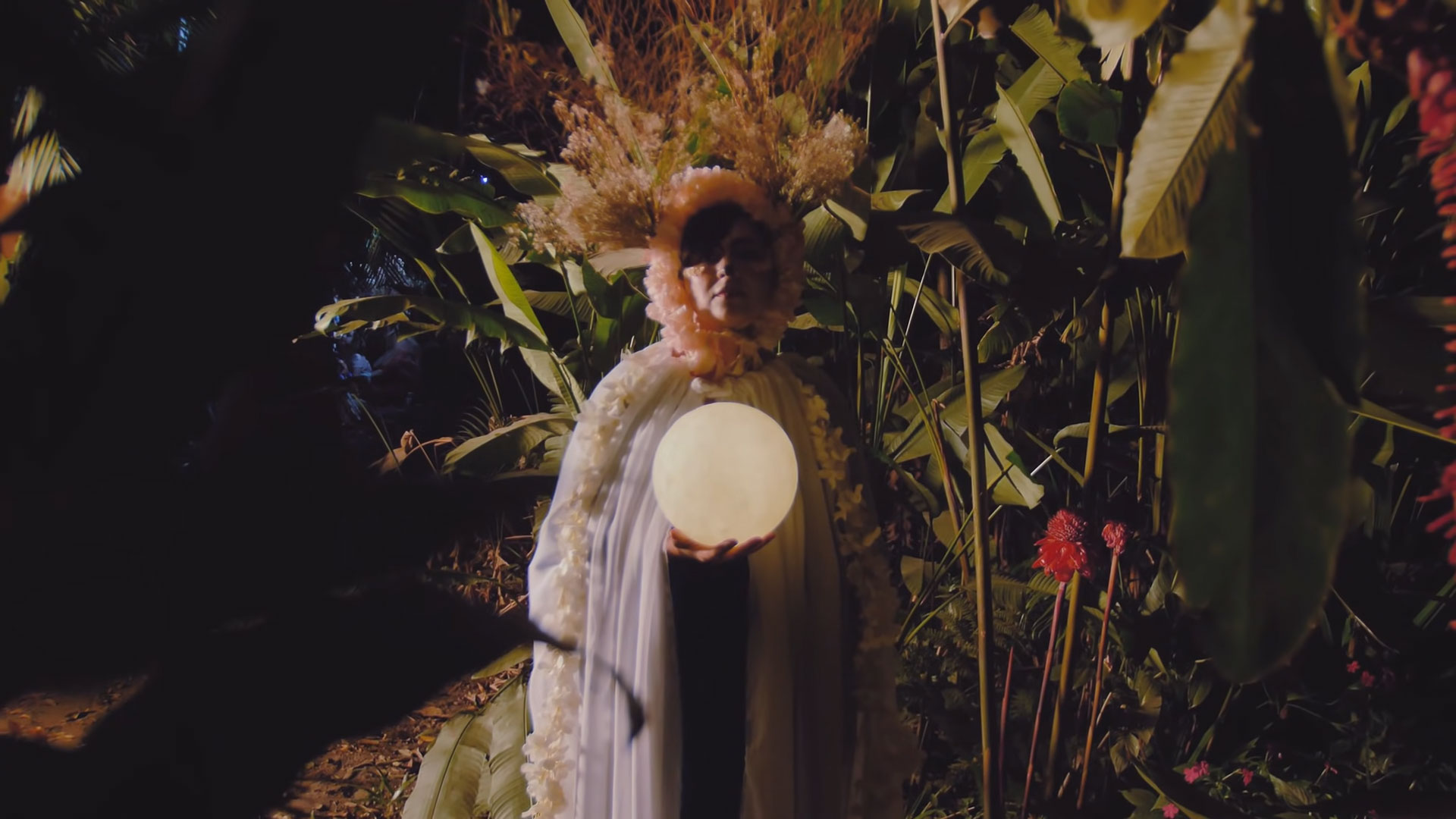
Is there anything else you’d like to add about your creative process? Interesting anecdotes or moments?
There’s an imaginary anecdote where our friend Benedek (the “Night Heron” character) became a method actor for three weeks to finally turn into a bird. During the shooting I tried [for] Carlos and Gabe [to act] as satires, but after a few attempts, I went back to the idea of androgynous flower beings instead. Also, after the shooting we had a fire and I discovered what I thought was a dinosaur egg buried in our patio, but turned out to be an avocado heart, after all.
An interesting aspect about the realization of this video was that the original idea I presented indicated not to use humans at all; to figure out how to animate flowers in an erotic natural world. The process and evolution of the project came about as the idea was developed into two videos and a longer story, with the artistic direction of Hannah opening the possibility of creating flower-like humanoids and the nahual incarnated protagonist (Heron) as well as Rodrigo’s ability to direct and connect both worlds.
FOLLOW THE ARTISTS:
Night Heron: bandcamp + instagram
Rodrigo Courtney: website + instagram
Anton Cerda: youtube + instagram
Hanna-Katarina: website + instagram
Ω






